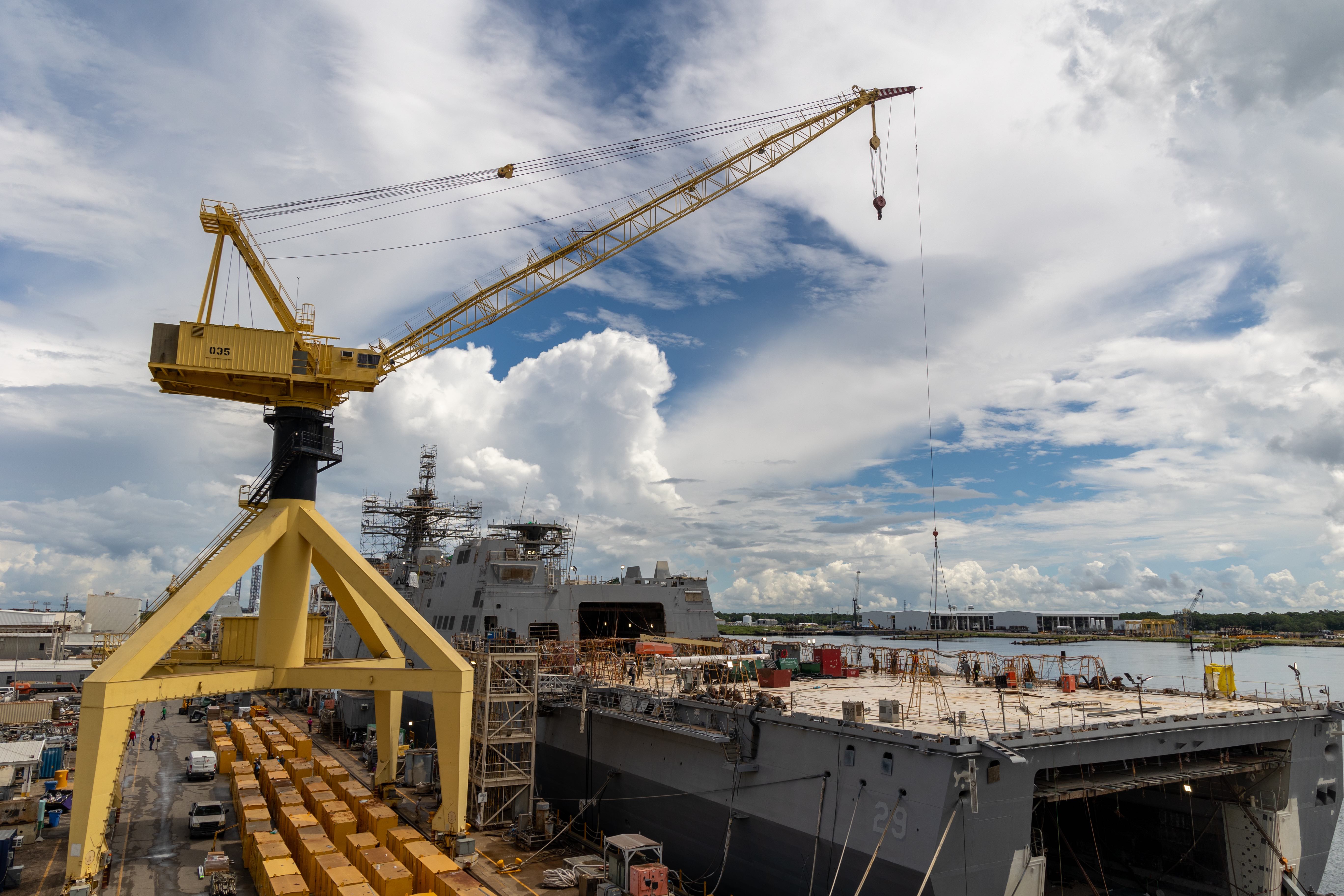
NATIONAL HARBOR, Md. – The Chief of Naval Operations wants the Navy to pursue a multi-year procurement strategy for the amphibious warship program the service indicated it would end in the latest budget submission.
“Most recently, on Friday, we put LPD-32 on contract at a good price and we hope to leverage the multi-year authorities that we have to keep that great line of ships going,” Adm. Mike Gilday said Monday at the annual Navy League’s Sea Air Space symposium.
Gilday was referring to a $1.295 billion contract modification issued Friday to HII’s Ingalls Shipbuilding for the detail design and construction of LPD-32, the last ship in the San Antonio-class amphibious transport dock line under the Navy’s current budget plans.
The CNO’s comments come as Pentagon officials publicly debate the future of the LPD-17 Flight II line, which the Navy has sought to end in its last two budget proposals. The recent Fiscal Year 2024 five-year budget outlook does not show the Navy buying any LPDs.
Navy officials, including Gilday, have voiced concern over the cost of the line and argued the service paused plans to buy more of the amphibious ships so it can study both cost and capabilities.
“Congress has given us the authorities in the latest [National Defense Authorization Act] to do a bundle buy and we all agree that that’s the way that we ought to go after these ships. But to go after a single ship in ‘25, and put that in the budget now – based on where we are with all this churn on cost and so forth and this concern about the cost of those ships – it’s like telling a car dealer, ‘Hey I really want to buy that minivan. I’m going to buy that minivan. Now let’s roll up our sleeves and talk about price,’” Gilday said of the line last month.
During Monday’s conference, Gilday cited the 2022 National Defense Strategy when asked why he thinks the composition of the fleet may change in his next force structure assessment.
“We have a new defense strategy in 2022 and we have new force size and constructs that are classified that actually shape the force of the future. And we see those guidelines come alive in defense planning scenarios that are really foundational to the analysis that we do. And so there are known unknowns there with respect to the analysis we’re going into,” Gilday said.
“The reason I said I can’t see it going below 373 is because just from what I see on a day-to-day basis with respect to demand, the war games that I participate in, and what I believe to be the importance of the naval force in a maritime fight,” he added.
The CNO was referring to his appearance last week before the Senate Appropriations defense subcommittee, which asked about the upcoming force structure assessment. Gilday told lawmakers he would send them the new assessment by June 10.
“With respect to not only the size, but the composition of the fleet, I would expect that to change from the last report, particularly in terms of composition,” Gilday told Sen. Susan Collins (R-Maine). “It’s too early to tell with respect to size, but quite honestly ma’am I can’t see it getting any smaller than 373 manned ships.”
The classified plan delivered to lawmakers last year called for a fleet of 373 manned ships and about 150 unmanned surface and underwater vehicles.





